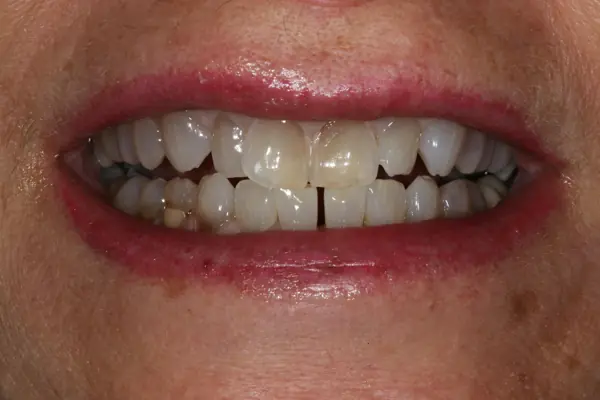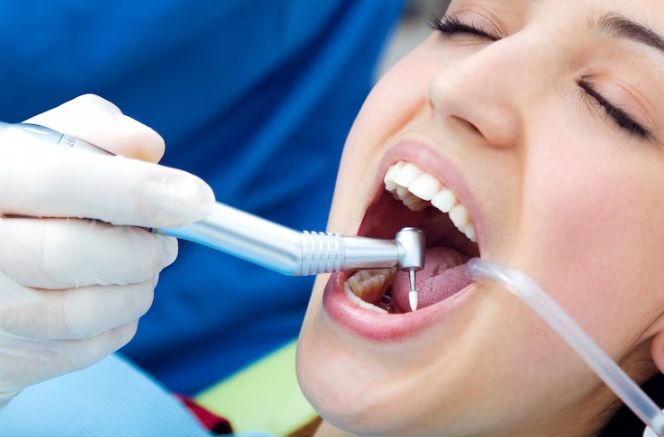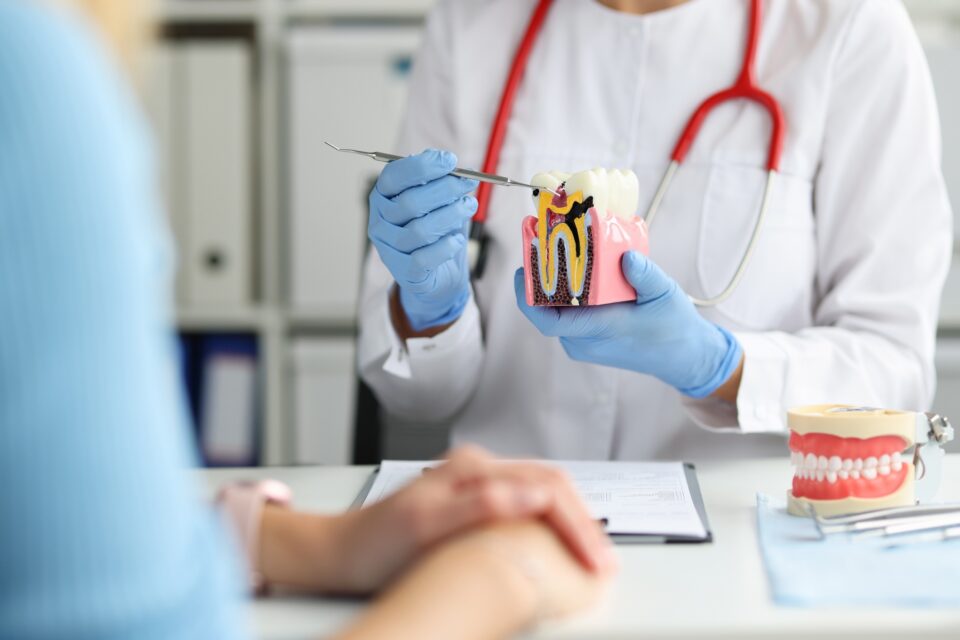There’s a point in many hygiene visits when the mirror clicks and your hygienist says, “Let’s keep an eye on these gums.” Translation: your mouth is sending a memo. The classic next steps used to be more brushing and flossing, scaling and root planing, a local antibiotic, and a follow-up. Solid care.
Today, gum treatment offers more. Lasers remove diseased tissue with precision. Biologic agents help rebuild lost attachment. Genetic and salivary tests spotlight risk before bone changes show. Microbial therapies aim to retrain your oral community instead of wiping it out.
We care about prevention and precision. Here’s a practical tour of what’s new and how it can make care gentler, smarter, and more effective.
What is Laser Assisted Periodontal Therapy For Gum Disease?
“Laser” sounds futuristic, but laser-assisted periodontal therapy is now a reliable tool. It targets inflamed pocket lining and bacterial biofilm while preserving healthy tissue. Pair it with meticulous cleaning for strong results.
How it works (without the physics exam):
- A fiberoptic tip slides into the periodontal pocket.
- The laser absorbs into pigmented pathogens and inflamed tissue, disrupting biofilm and coagulating infected lining.
- Heat forms a sterile clot that acts like a biological bandage and encourages reattachment.
- We finish roots mechanically to remove calculus so calm tissue can reattach to clean surfaces.
Why patients like it:
- Less bleeding and swelling.
- Fewer sutures and scalpels in select cases.
- Usually a more comfortable recovery than traditional surgery.
Where an experienced hand matters:
- A laser is a tool, not a cure. Results depend on diagnosis, case selection, excellent instrumentation, and your home care.
- Not all lasers behave the same. Protocols should match your biology.
- Deep vertical defects, mobility, or heavy calculus may still need regenerative surgery. Lasers often complement other therapies.
When we pair laser therapy with thorough debridement and risk control like diabetes management, smoking cessation, and bite adjustments, we can quiet inflammation, shrink pockets, and sometimes avoid more invasive surgery.
How Do Biologic Agents Promote Gum and Bone Regeneration?
If lasers refine the cut, biologics fuel the repair. Classic therapy controls disease. Biologics help rebuild ligament, cementum, and bone by nudging your cells to regenerate.
The biologic toolbox (big ideas in small vials):
- Enamel Matrix Derivatives (EMD): Proteins that mimic tooth development signals. In narrow, vertical defects, EMD can encourage true attachment.
- Growth Factors (PDGF, BMPs): Signals that recruit and multiply the right cells. Often combined with grafts and membranes in guided tissue regeneration.
- Autologous Concentrates (PRF/PRP): Your blood processed into a fibrin membrane rich in platelets and cytokines. A slow-release healing patch.
- Bone Grafts & Scaffolds: Donor, animal, or synthetic materials provide structure while biologics give instructions.
- Hyaluronic Acid & Bioactive Cements: Adjuncts that calm inflammation, support soft tissue, or help seal root surfaces.
When regeneration shines:
- Contained defects respond better than flat, horizontal bone loss.
- Tooth stability matters. Mobility reduces success.
- Risk control like plaque management, smoking cessation, and bite adjustment is essential.
Opinion, distilled:
Biologics reward great technique and good candidates. The best results come from careful case selection, clean roots, and patients who follow post-op instructions closely.
What Role Does Genetic Testing Play in Advanced Periodontal Risk Assessment?
This is personalized dentistry in action. We used to assess risk by bleeding, pocket depth, bone loss, smoking, diabetes, and home care. Genetic and salivary testing adds the “why.” Some people overreact to plaque. Others do not.
What we can look at today:
- Genetic polymorphisms: Variations linked to stronger inflammatory responses. They do not doom you. They explain why some mouths flare easily.
- Salivary biomarkers: Enzymes and mediators like MMP-8 and CRP that hint at active breakdown now.
- Microbial profiles: DNA or RNA tests that map bacterial communities and flag high-risk organisms.
How it actually changes care (beyond curiosity):
- Recall frequency: A “hot” inflammatory profile may benefit from 3 to 4 month maintenance instead of 6.
- Adjunct choices: Earlier site-specific antimicrobials, host modulation like low-dose doxycycline, or laser adjuncts during flares.
- Systemic collaboration: If markers stay high despite cleanings and home care, we coordinate with your physician to check for metabolic or airway issues that keep inflammation high.
A gentle caution:
A risk gene is not a sentence and a “quiet” profile is not a free pass. Tobacco, plaque control, diet, stress, anatomy, and bite forces still matter. We treat the patient, not the printout.
Are There Emerging Microbial Based Therapies For Managing Periodontitis?
Think garden, not battlefield. The goal is a resilient community where pathogens cannot take over. New tools reflect that shift.
What’s bubbling up:
- Probiotics & Postbiotics: Selected strains that compete for binding sites, adjust pH, and calm the immune response. Postbiotics may deliver benefits without live organisms.
- Prebiotics for the mouth: Substrates like xylitol that feed helpful species and starve acid makers.
- Photodynamic therapy: A dye targets biofilm. Light activates it to create reactive oxygen species that disrupt pathogens locally.
- Bacteriophages: Viruses that target specific bacteria. Early days but promising.
- Quorum-sensing blockers: Compounds that interrupt bacterial signaling so biofilm cannot coordinate.
- Antimicrobial peptides: Natural or synthetic peptides that selectively disrupt pathogens and support healing.
Why this matters to real people:
- Fewer broad-spectrum antibiotics means fewer gut side effects and less resistance pressure.
- Therapies that reshape biofilm reduce rebound after antiseptics.
- Local, gentle tools pair well with frequent maintenance for high-risk patients.
Where the rubber meets the road (today):
- We integrate photodisinfection and probiotic lozenges with mechanical cleaning in select cases.
- We use xylitol and neutral pH routines to keep the garden friendly between visits.
- Expect care plans that train your microbiome rather than fight short-term wars.
The Human Side: Turning High-Tech Into Real-Life Wins
Innovation only works when it fits your life. Our most successful patients share a few habits.
- They view maintenance as training cycles. Three or four month cleanings keep high-risk biology steady.
- They upgrade tools, not willpower. A soft brush or a quality electric brush with a pressure sensor, easy flossing options, and a remineralizing toothpaste make consistency simple.
- They connect dots. Gum flares often track with stress, poor sleep, mouth breathing, reflux, or dry mouth from new meds. When you tell us, we tailor your plan and loop in your MD if needed.
- They play the long game. Fewer surgeries, steadier bone on X-rays, and teeth that last come from daily habits and regular touch-ups.
Get a Personalized Plan for Regeneration, Not Just Repair
If your gums keep repeating the same story, or you want a plan that matches your biology, we can help.
Ready for gum care that feels current and human? Book your consult with Jaline Bocuzzi, DMD, PA // JBDentistry. Let’s turn “keep an eye on these gums” into “look how healthy these gums are” with tools that respect your biology, comfort, and time.


